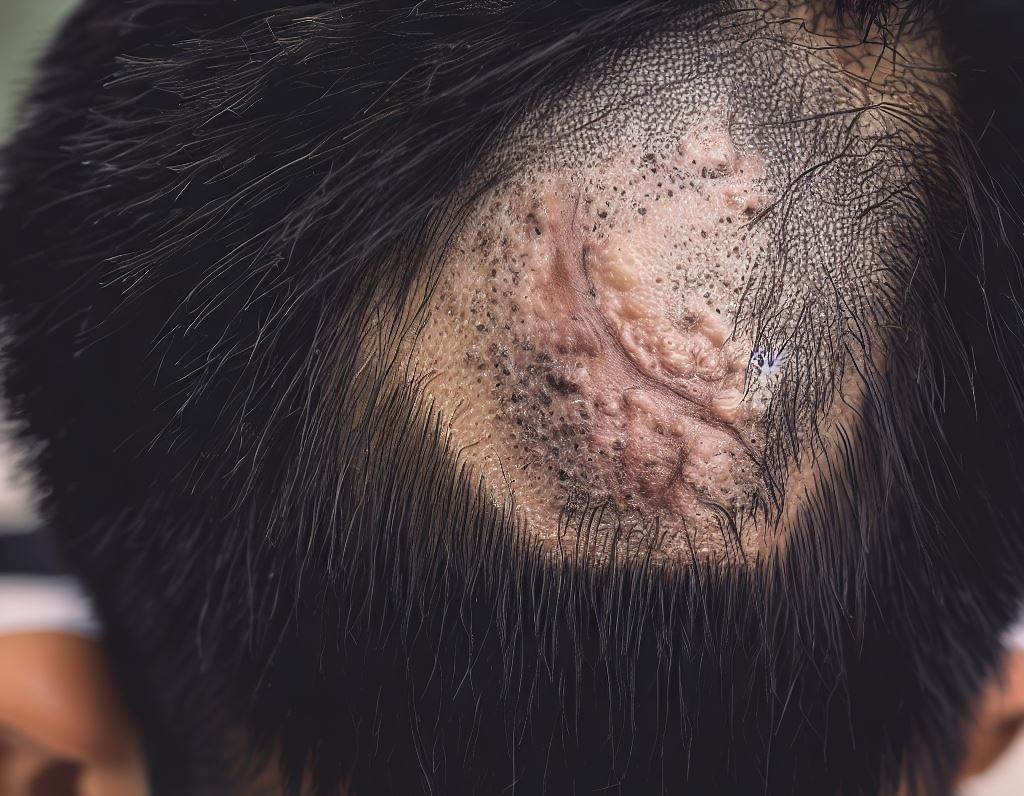Scarring alopecia, also known as cicatricial alopecia, is a category of rare disorders that destroy hair follicles, replacing them with scar tissue, ultimately leading to permanent hair loss. Unlike traction alopecia, which arises from external hair practices, scarring alopecia involves an inflammatory process that occurs within the hair follicle. This article will delve into the intricacies of scarring alopecia and assess the potential benefits of topical solutions like minoxidil and finasteride in its treatment.
Causes of Scarring Alopecia
While the exact cause of scarring alopecia remains largely unknown, the condition is characterized by inflammation that damages stem cells and sebaceous (oil) glands in the hair follicles. Potential triggers include:
- Autoimmune reactions: The body’s immune system attacks hair follicles.
- Infections: Such as fungal infections or bacterial infections.
- Other skin conditions: Diseases like lichen planus or discoid lupus can lead to scarring alopecia.
- Physical trauma: Including burns or surgeries.
Symptoms of Scarring Alopecia
The manifestations of scarring alopecia can vary, but common symptoms include:
- Gradual hair loss: Small patches that expand over time.
- Scalp tenderness or pain.
- Burning or itching.
- Smooth, shiny areas on the scalp: Indicative of scarred areas where hair follicles have been replaced.
- Redness, pustules, or blisters: Especially in the active phase of the disease.
Treatment of Scarring Alopecia
Early detection and treatment are crucial, as the goal is to halt the inflammatory process before hair follicles are permanently destroyed:
- Anti-inflammatory medications: Including corticosteroids (injected, topical, or oral) or other immunosuppressive drugs.
- Antibiotics: To treat or prevent infections that might exacerbate the condition.
- Hair transplantation: Can be considered in cases where the disease has been inactive for at least a year.
Minoxidil and Finasteride: Are They Effective for Scarring Alopecia?
Minoxidil: Primarily known for treating androgenic alopecia, minoxidil functions by prolonging the growth phase of hair follicles. Though not the main line of treatment for scarring alopecia, there’s some anecdotal evidence suggesting that it might be helpful for some individuals. The rationale is that minoxidil could potentially stimulate any remaining viable follicles in the scarred region. However, its efficacy for scarring alopecia is not as well-documented as for other forms of hair loss.
Finasteride: A DHT inhibitor, finasteride works primarily by targeting the hormonal process that leads to androgenic alopecia. Scarring alopecia, being primarily an inflammatory condition, is not driven by DHT, which makes the direct applicability of finasteride less clear. However, in instances where patients with scarring alopecia have concurrent androgenic alopecia, finasteride might play a role in reducing the overall hair loss.






